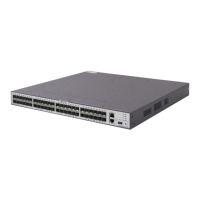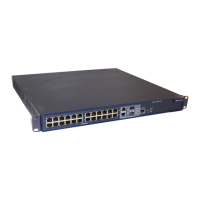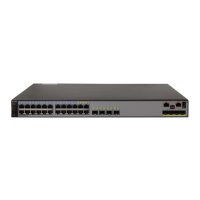9.3 Connecting the RPS1800 to a Switch
Context
The RPS1800 can connect to a maximum of six switches and ensure seamless failover for one
switch if the internal power module of the switch fails. Among the six DC output ports, port 1
has the highest priority. The switch connected to port 1 preferentially receives power from the
RPS1800.
If the RPS1800 uses the same external power supply system as the connected switches, it can
prevent service interruption caused by failures of the switches' internal power modules.
However, for improved reliability, if the RPS1800 uses a different external power supply
system than the connected switches, it can prevent service interruption caused by failure of
internal power modules and external power supply systems of the switches.
DANGER
Ensure that the power is off before connecting power cables.
NOTICE
l Power cables of the RPS1800 must be routed indoors or buried underground if they are led
in from the outside. Do not aerially route the power cables outdoors.
l Do not power on the switch until you finish installing the switch and connecting all cables.
l Power cables delivered with a switch are for use with this switch only.
Tools and Accessories
l ESD wrist strap or ESD gloves
l Phillips screwdriver
l RPS cable
l RPS AC power cable
Procedure
Step 1 Wear an ESD wrist strap or ESD gloves. When wearing an ESD wrist strap, ensure that it is in
close contact with your wrist and grounded properly.
Step 2 Connect an RPS cable to the RPS1800.
1. Insert one end of the RPS cable into an output port on the RPS1800 according to the
networking plan. Ensure that the top side of the plug (marked "TOP") faces up.
2. Tighten the captive screws on the plug.
S2700&S3700&S5700&S6700 Switch
Hardware Installation and Maintenance Guide
9 (Optional) Installing an RPS1800
Issue 13 (2017-11-20) Huawei Proprietary and Confidential
Copyright © Huawei Technologies Co., Ltd.
71

